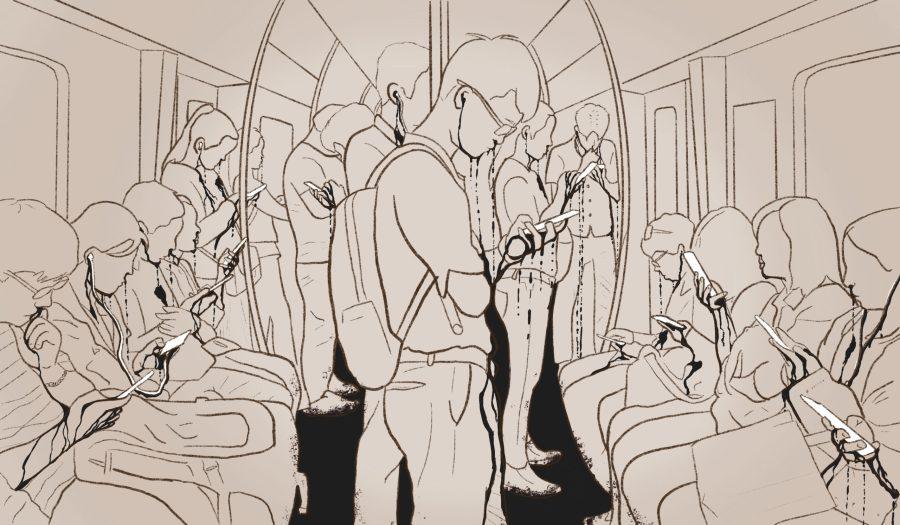“Get off your phone” is a phrase that is frequently thrown in the face of younger generations. The sheer commonality of these four words makes the automatic eye roll or shrug laden with irritation an understandable response. It was not too long ago that this was my own programmed reaction. However, as frustrating as it is to hear, I have grown to understand that everyone should heed this healthy reminder. In this digital age, it is easy to mindlessly scroll on your phone. It is easy to keep your head down and bury your attention in an endless amount of digital content because all it takes is the swipe of a finger, a tap of a screen, a press of some buttons to get lost in the automated world of social media and instant messaging. But, it is important to remember the feeling of isolation that arises from constant phone usage. This self-imposed loneliness can easily devolve into poor emotional well-being, since genuine human connection cannot be replicated on a mobile device — regardless of its social capabilities.
The correlation between loneliness and smartphone usage is not a newly discovered phenomenon. For years, various studies have been conducted on this relationship and they tend to arrive at the same conclusion: frequent smartphone usage is significantly linked to loneliness, depression, and anxiety. This is especially common in young adults in the United States who spend an average of seven hours a day on their phones. Overall, smartphones tend to be a breeding ground for emotional turmoil.
However, the argument is slightly more nuanced than it seems. In recent years, smartphones are now advertised as valuable communication resources. Apps like Discord, Skype, Snapchat, and Instagram all feature a relatively strong network of connectivity that can supposedly promote social behaviors and foster a digital form of kinship. Over the course of quarantine, these digital forms of communication grew in popularity. The majority of social interactions moved to a digital setting due to the limitation and absence of in-person socialization. However, these supposed digital “connections” did very little to limit feelings of loneliness and isolation, especially in young adults. Despite smartphones providing a form of communication during quarantine, loneliness among teenagers skyrocketed, leading me to believe that smartphones only serve to create the illusion of connectivity.
It is not uncommon to see young adults utilize their phones for social media, texting, or general communication with others. While this may seem like a reasonable excuse to allow the incessant use of technology because it promotes sociability, digital interactions do not hold the same impact as in-person connection. It is easy to fall into relying on these handheld devices because of the ease at which they are available. But, the reality is, when you use your phone, you are often still physically alone with only the digital ghost of a friend or family member, which is not nearly as rewarding as an authentic presence. Despite the belief that in-person interactions are more difficult or taxing to initiate, they simply begin with a “hello” and can continue on for however long or short you would like.
Furthermore, face-to-face socialization has been proven to have a variety of benefits. Emotionally, it produces dopamine which results in a positive emotional state and an increase in motivation. Oxytocin levels are also proven to raise and subsequently reduce stress levels. Mentally, improvement in memory abilities and the reduction of neurodegenerative diseases has also been noted.
Luckily, the method to unlocking all these potential health benefits can be quite effortless. It is as simple as looking up from your screen and engaging with the world and the people around you. When you are waiting for your lecture to begin, try starting a simple conversation with the person next to you. When you get on an elevator, resist the temptation to pull out your phone to cover the awkward silence and instead try engaging with the other person. When you walk to class, take your headphones off and introduce yourself to someone new. It is simple moments like these that lead to rewarding interactions and improve your overall well-being.
Art by Ava Bayley for UCSD Guardian.















